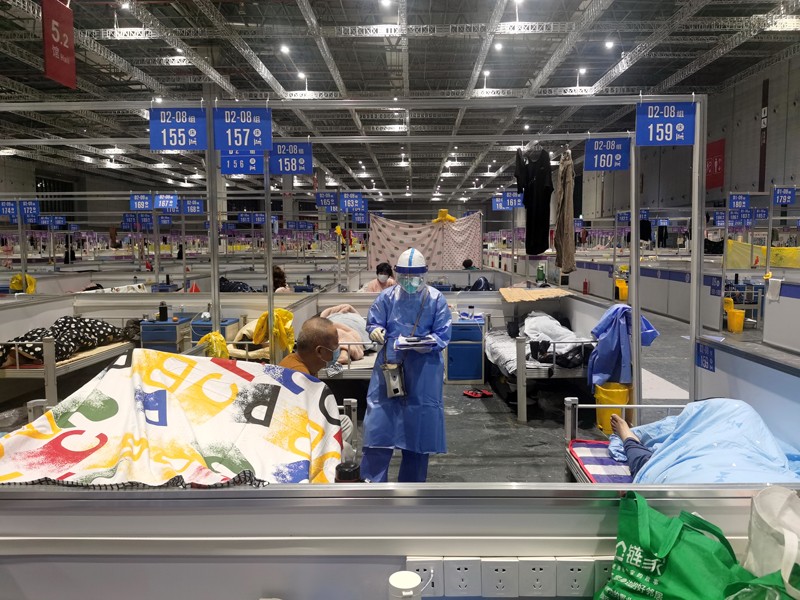China approves first home-grown COVID antiviral
Table of Contents
China’s drug regulator has granted conditional approval for an HIV drug to be used to treat COVID-19. The drug, Azvudine, developed by Chinese drugmaker Genuine Biotech, is the first oral antiviral made in China approved to treat the disease.
Genuine Biotech, headquartered in Pingdingshan, applied for regulatory approval last month. In an announcement, the company said that 40% of people with COVID-19 who were given Azvudine for a week in a phase III clinical trial showed “improved clinical symptoms”, compared with 11% of those given a placebo. However, detailed data from the trial, including whether the treatment reduced the risk of hospitalization or death, have not been released.
Although drug-efficacy data are lacking, Jun Wang, a pharmacologist at Rutgers University in New Brunswick, New Jersey, says that because Azvudine is already approved in China as an HIV treatment, it should have abundant safety data, which would have fast-tracked the firm’s application.
In China and globally, the demand for COVID-19 therapies is enormous. Another Chinese-made oral antiviral, VV116, is in the final stages of development, and another dozen are in various stages of development.
Chile proposes constitution steeped in science
Since it was finalized in July, a draft of what could become Chile’s constitution has had crowds clamouring to read it online and in print.
As the nation’s researchers pore over the text, which could reshape their country if approved during a 4 September vote, they are finding a lot to like. It contains a number of articles designed to boost science, expand environmental protection and improve the education system.
In October 2019, many Chileans protested against decades of social and economic inequalities, and demanded political reform and a new constitution. A year later, the nation voted overwhelmingly to replace the document.
Although it was drafted by a democratically elected assembly that included scientists, teachers and representatives of Chile’s Indigenous people, the proposal has not won favour with everyone. Several polls show that the majority of those surveyed plan to vote against it.
Still, some scientists are holding out hope. For Carlos Olavarría, director of the Center for Advanced Studies of Arid Zones in La Serena, the promise to make science a pillar of society points to a future that he is eager to see. “I dream that Chile walks towards that path,” he says.
Carbon dating hampered by rising fossil-fuel emissions
The burning of fossil fuels has officially shifted the composition of carbon isotopes in the air of the Northern Hemisphere enough to cancel out a useful signal from nuclear-weapons testing (H. Graven et al. Nature 607, 449; 2022).
This could cause problems for archaeologists, because modern items now look like objects from the early twentieth century in terms of radiocarbon dating. The development also means that forensic scientists will no longer be able to use radiocarbon fingerprints to pinpoint the ages of materials such as ivory, antiques and wine.
Carbon-dating techniques rely on the fact that there are several isotopes of carbon in the air, including stable carbon-12 and a small amount of radioactive carbon-14, which is generated mainly when cosmic rays interact with the atmosphere.
Living things absorb both types of carbon. After they die, the relative amounts of the two isotopes start to change as the radioactive carbon-14 decays with a half-life of 5,700 years. By measuring how much carbon-14 is left in an object, researchers can date organic materials, such as wood, fabric or bone, that are up to about 55,000 years old. Typically, the smaller the proportion of carbon-14, the older the material.
For modern objects that are just decades old, the decay of carbon-14 is negligible. But the rapid spike in carbon-14 released by nuclear weapons testing between 1952 and 1962 created a diagnostic ‘bomb curve’ of carbon-14 levels. Since then, that carbon-14 has been slowly absorbed by living things and the ocean. At the same time, the burning of fossil fuels has been rapidly releasing CO2 that does not contain carbon-14.
As of 2021, these two effects have officially cancelled each other out in the Northern Hemisphere (see ‘Altered carbon’). This means that researchers will increasingly have to rely on other techniques or isotopes to do their dating.



